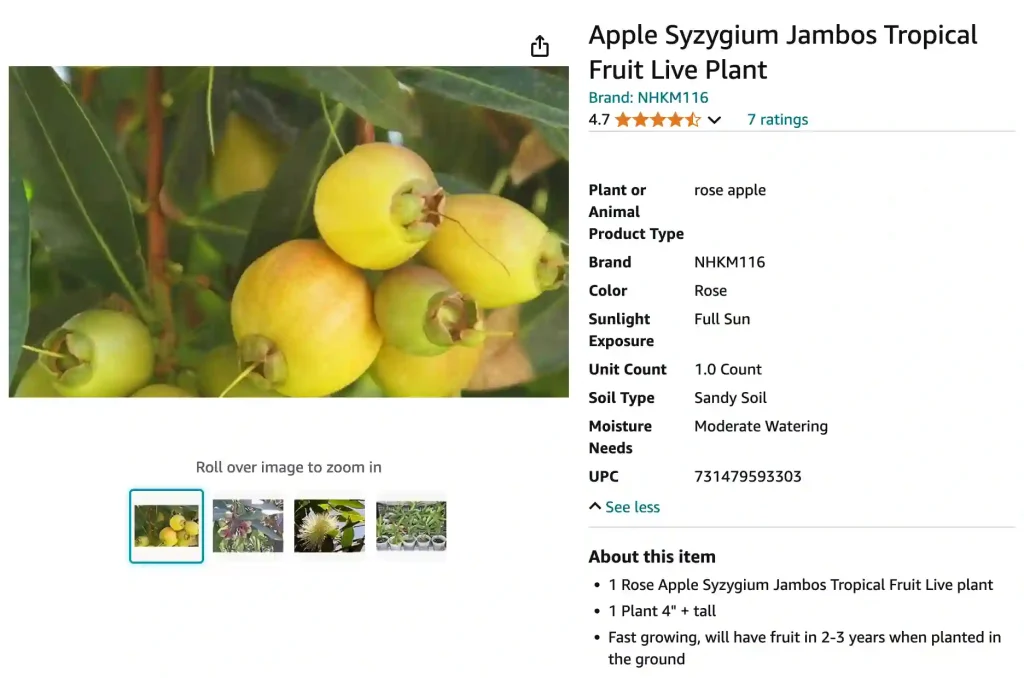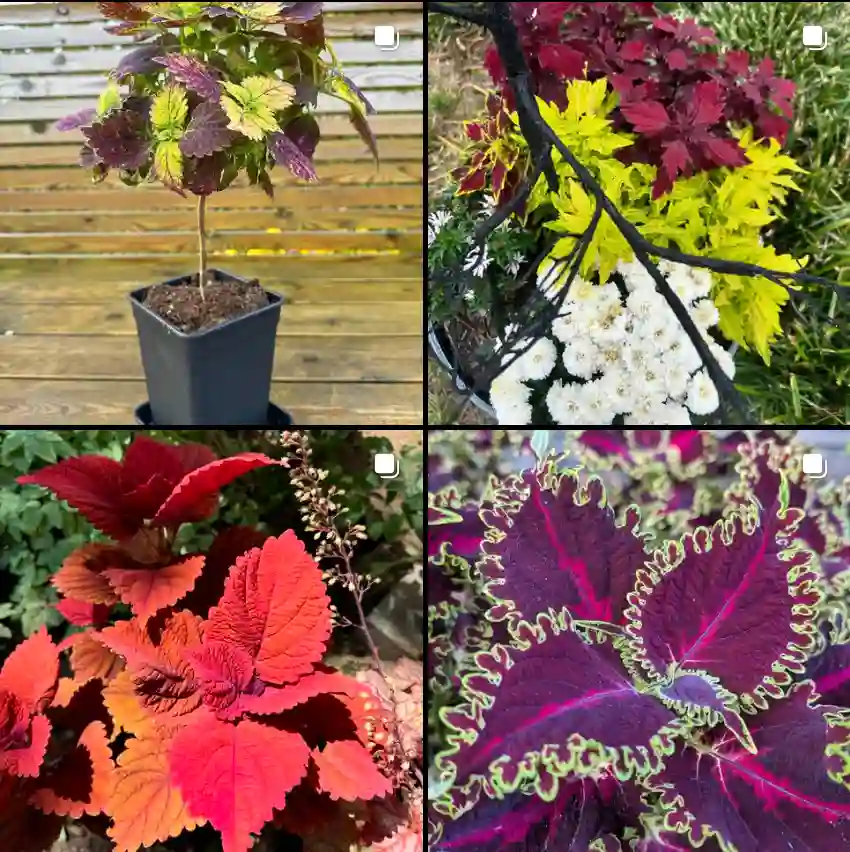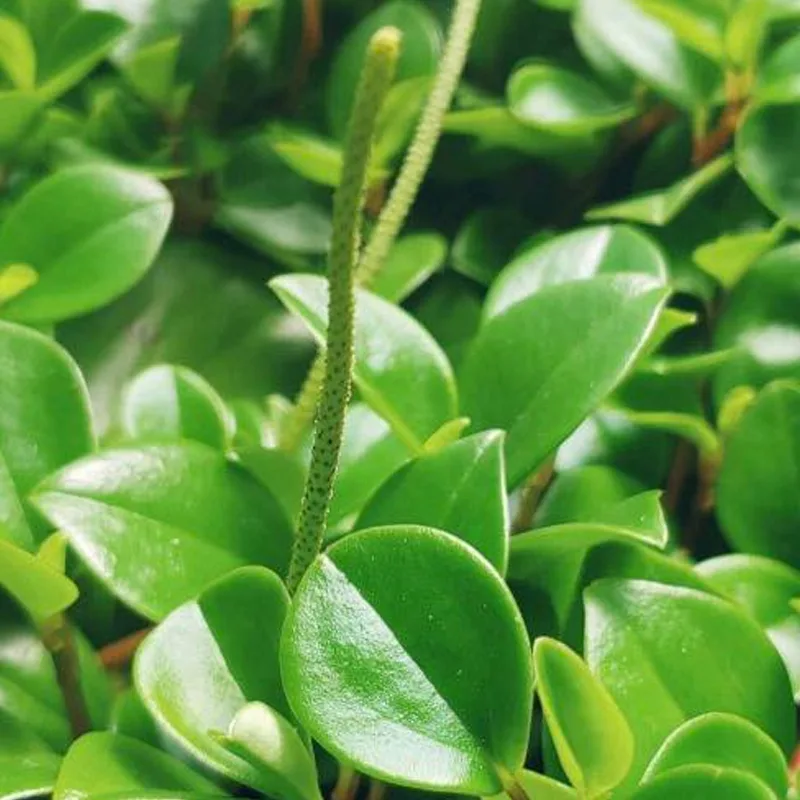
Frequently Asked Questions About Syzygium Jambos
If you’re considering adding Syzygium Jambos, also known as the Rose Apple, to your garden or home, you might have a few questions about this intriguing plant. Here, I’ll cover everything you need to know about Syzygium Jambos, from its growth and care to its potential invasiveness.
1237 Species in Genus Syzygium
What Is Syzygium Jambos?
Syzygium Jambos, commonly referred to as the Rose Apple, is a tropical evergreen tree native to Southeast Asia. It’s known for its aromatic leaves and fruit, which have a rose-like fragrance. The tree can grow up to 30 feet tall and is often cultivated for its ornamental value and edible fruit. The fruit itself is not an apple but a rounded, somewhat waxy fruit with a delicate, sweet taste.
What Does a Rose Apple Taste Like?
The taste of Rose Apple is subtly sweet with a hint of rose-like fragrance, hence its name. Imagine a mild blend of apple and pear with a slight floral undertone. It’s juicy and crisp, making it a refreshing treat, especially in hot climates.
How to Eat Rose Apple?
Rose Apple is versatile when it comes to eating. You can enjoy it fresh, straight from the tree—just rinse it under water and bite in, as the entire fruit is edible, including the skin. Some people also slice it and add it to salads for a refreshing crunch. Additionally, it can be used in desserts like Rose Apple pie or even stewed with sugar to create a delicious compote.
How to Grow Syzygium Jambos?
Growing Syzygium Jambos is relatively straightforward if you live in a tropical or subtropical climate. Here’s a guide to help you get started:
- Climate Requirements: Syzygium Jambos thrives in warm climates with temperatures ranging from 60°F to 95°F. It prefers full sun but can tolerate partial shade.
- Soil Conditions: The plant prefers well-draining soil rich in organic matter. While it can grow in a range of soil types, it’s essential to avoid waterlogged conditions which can lead to root rot.
- Planting: When planting Syzygium Jambos, ensure you dig a hole that is twice as wide as the root ball. Place the tree in the hole, backfill with soil, and water thoroughly.
- Watering: Regular watering is crucial, especially during the dry season. Keep the soil consistently moist but not waterlogged.
- Fertilizing: Apply a balanced, slow-release fertilizer in the spring and summer to promote healthy growth and fruit production.
How to Care for Syzygium Jambos?
Caring for Syzygium Jambos involves routine maintenance to ensure its health and productivity:
- Pruning: Prune the tree to maintain its shape and remove any dead or diseased branches. This also helps improve air circulation within the canopy.
- Pests and Diseases: Keep an eye out for common pests such as aphids and scale insects. Diseases like leaf spot or root rot can be managed with proper watering and by avoiding overhead watering.
- Mulching: Mulch around the base of the tree to retain soil moisture and suppress weeds. Be sure to keep mulch away from the trunk to prevent rot.
How to Propagate Syzygium Jambos?
Syzygium Jambos can be propagated from seeds or cuttings:
- Seeds: Collect seeds from mature fruit and soak them in water for 24 hours. Plant them in a seed tray with well-draining soil and keep them in a warm, sunny location. Seeds typically germinate within a few weeks.
- Cuttings: Take semi-hardwood cuttings from a healthy tree and dip them in rooting hormone. Plant the cuttings in a pot with a mix of peat and perlite. Keep the cuttings in a warm, humid environment until roots develop.
What to Plant With Syzygium Jambos?
When planting Syzygium Jambos, consider companions that have similar requirements:
- Citrus Trees: These share similar soil and light preferences.
- Pineapple: Prefers warm climates and can benefit from similar soil conditions.
- Hibiscus: Adds a splash of color and thrives in similar environments.
Can You Grow Syzygium Jambos Indoors?
While Syzygium Jambos is primarily suited for outdoor cultivation, it can be grown indoors in a large pot if you have adequate space and lighting. Ensure it receives plenty of sunlight and maintain high humidity to mimic its natural habitat.
Is Syzygium Jambos Toxic?
Syzygium Jambos is not known to be toxic to humans or pets. The fruit is edible and often enjoyed for its unique flavor. However, as with any plant, it’s a good idea to monitor pets and children to prevent them from consuming large quantities.
Common Problems with Syzygium Jambos
Some common issues you might encounter include:
- Pests: Aphids and scale insects can infest the plant.
- Diseases: Watch out for leaf spot and root rot.
- Fruit Drop: Inconsistent watering or nutrient deficiencies can lead to premature fruit drop.
Is Syzygium Jambos Invasive?
Syzygium Jambos can be invasive in some regions. It has the potential to spread quickly and outcompete native plants, especially in tropical and subtropical areas. If you live in an area prone to invasiveness, it’s essential to manage the plant carefully and consult local guidelines.
Where to Buy Rose Apple Fruit?
You can find Rose Apple fruit in tropical regions, primarily in local markets or specialty fruit stores. If you’re not in a tropical area, some Asian grocery stores or online tropical fruit vendors may have them. Just keep in mind that because Rose Apple is delicate, it may not always be available in areas far from where it’s grown.
Can Dogs Eat Rose Apple?
As a pet owner, it’s essential to be cautious about what your dogs consume. While Rose Apple itself isn’t toxic to dogs, the seeds can be a concern as they may contain substances that could potentially be harmful if ingested in large amounts. Always remove the seeds before offering any to your dog and feed in moderation.
How Much is a Rose Apple?
The price of Rose Apple can vary depending on the location and availability. In regions where it’s grown abundantly, like Southeast Asia, it’s often quite affordable. However, in areas where it’s considered a rare or exotic fruit, the price can be higher. Typically, you might expect to pay anywhere from $2 to $5 per pound.
How to Make a Rose Apple Pie?
Making a Rose Apple pie is a delightful way to enjoy this fruit. Start with a basic pie crust. For the filling, slice the Rose Apples thinly and mix them with sugar, a pinch of salt, and a dash of cinnamon. Arrange the slices in the pie crust, then bake until the fruit is tender and the crust is golden brown. The result is a fragrant, slightly floral pie that’s perfect for any dessert table.
Is Rose Apple Good for Diabetes?
Rose Apple may be beneficial for people with diabetes due to its low glycemic index and high fiber content. The fiber helps slow down the absorption of sugar, preventing sudden spikes in blood sugar levels. However, as with any food, it’s essential to consume it in moderation and consult with a healthcare provider regarding its inclusion in a diabetic diet.
What is Rose Apple Called in Hindi?
In Hindi, Rose Apple is commonly referred to as “Gulab Jamun,” not to be confused with the popular Indian dessert of the same name. This name reflects its floral aroma and appealing appearance.
Is Rose Apple Good for Pregnancy?
Rose Apple can be a good addition to a pregnancy diet, thanks to its rich content of vitamins A and C, fiber, and antioxidants. These nutrients support both the mother’s and the baby’s health. However, pregnant women should consume it in moderation and ensure it’s properly cleaned before eating to avoid any potential risk of infection.
What Are the Benefits of Rose Apple?
Rose Apple is packed with health benefits. It’s rich in vitamins A and C, which are essential for immune health. It also contains dietary fiber, which aids digestion, and antioxidants that help protect the body from oxidative stress. Additionally, the fruit’s natural diuretic properties can support kidney health.
Rose Apple vs Wax Apple
Rose Apple and Wax Apple (Syzygium samarangense) are often confused due to their similar appearance. However, there are some differences. Rose Apple is smaller and has a more pronounced floral aroma, while Wax Apple is larger, often with a waxy sheen on the skin and a crisper, less aromatic taste.
Rose Apple vs Guava
While both belong to the Myrtaceae family, Rose Apple and Guava are distinct. Guava tends to be more robust in flavor and has a grainy texture with tiny seeds. In contrast, Rose Apple is lighter, with a floral fragrance and fewer seeds, making it easier to eat raw.
In summary, Syzygium Jambos is a versatile and attractive plant that can enhance your garden with its fragrant fruit and ornamental appeal. By understanding its care requirements and potential invasiveness, you can enjoy the benefits of this unique tree while managing its growth responsibly.
If i die, water my plants!



